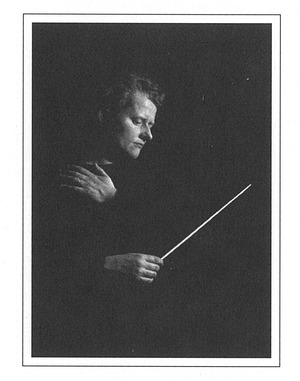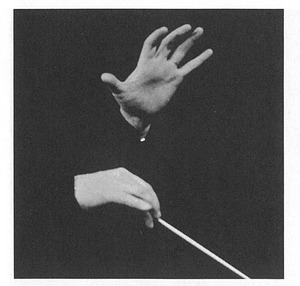Frédérique Petrides facts for kids
Quick facts for kids
Frédérique Petrides
|
|
|---|---|

Courtesy of the New York Public Library for the Performing Arts, Music Division, and The University of Arkansas Press
|
|
| Born |
Frédérique Mayer
September 26, 1903 |
| Died | January 12, 1983 (aged 79) |
| Nationality | Belgian-born American |
| Citizenship | United States |
| Occupation | Orchestral conductor, editor and publisher, violinist |
| Years active | 54 |
| Organization | Orchestrette Classique, West Side Orchestral Concerts |
|
Notable work
|
Editor and publisher of the Women in Music newsletter |
| Spouse(s) | Peter Petrides (1896-1978) |
| Children | Avra Petrides, daughter (November 21, 1938-) |
| Awards | National Federation of Musicians, 1979 Merit Award |
Frédérique Petrides (pronounced peh TREE dis), (September 26, 1903 – January 12, 1983), was a Belgian-American conductor and violinist. She was a true pioneer, becoming one of the first women to lead an orchestra. In 1933, she started and conducted the Orchestrette Classique in New York. This orchestra was made up entirely of women musicians.
The Orchestrette Classique helped introduce new music by American composers like Paul Creston, Samuel Barber, and David Diamond. These composers are now very famous. Frédérique Petrides also created and published a special newsletter called Women in Music. This newsletter shared stories about professional women musicians throughout history. She also started several concert series in Manhattan, including the West Side Orchestral Concerts.
Contents
Early Life and Musical Beginnings
Growing up in Belgium
Frédérique Petrides was born Frédérique Jeanne Elisabeth Petronella Mayer in Antwerp, Belgium, on September 26, 1903. She had two younger brothers, Jan and Gottfried. Her father, Joseph Heinrich Friedrich Mayer, was a well-known businessman and art collector. Her mother, Séraphine Sebrechts Mayer, was a talented pianist, composer, and teacher at the Royal Conservatory of Brussels. She was also a skilled painter and photographer.
Frédérique, often called "Riki" by her family and friends, grew up in a unique household. Her father was quite strict. Her mother focused on their artistic education. A close family friend, Jeanne Françoise Schenck, whom they called Godel, also lived with them. Godel, along with a governess, helped with their daily lives and schooling.
The family also spent many days at their country home, The Kitchburg, near Antwerp. There, the children explored the grounds and played games. Frédérique began her musical training early. She studied violin with Mathieu Crickboom, a famous violinist. Her mother taught her music theory and composition. Frédérique believed that her mother's own musical talent was not fully used because of traditional expectations. This inspired Frédérique to work hard for women musicians to have more opportunities.
Moving to New York
In 1923, Riki moved to the United States. She joined a conducting class at New York University because it had an orchestra she could practice with. She also gave violin lessons and performed violin recitals. Later, from 1950 to 1956, she learned a lot from attending rehearsals of the New York Philharmonic. She was invited by the famous conductor Dimitri Mitropoulos, whom she admired.
The Orchestrette Classique
In 1931, Frédérique married Peter Petrides, a journalist. He strongly supported her career. In 1933, he encouraged her to start the Orchestrette Classique. He became its manager and publicist. This orchestra was made up only of women. They performed five to six concerts each year at Carnegie Chamber Music Hall, which is now Weill Recital Hall. In 1942, the group changed its name to the Orchestrette of New York.
Under Frédérique Petrides's leadership, the orchestra played a mix of music. They performed older, less-known classical pieces. They also introduced new works by American composers like Samuel Barber and Paul Creston, and the British composer Ralph Vaughan Williams. Many of these pieces are now very famous.
From 1935 to 1940, Frédérique and her husband published the Women in Music newsletters. This special series tracked the achievements of women musicians from ancient times to their present day.
End of the Orchestrette
The Orchestrette of New York had many talented women musicians. During World War II, many men were drafted into the army, leaving open spots in major symphony orchestras. These orchestras then offered positions to the women from the Orchestrette. Frédérique Petrides did not want to stop her musicians from advancing their careers. So, she decided to end the Orchestrette. Their final performance was in 1943.
Later Career and Impact
After the Orchestrette, Frédérique Petrides continued to conduct orchestras with both men and women. She kept finding and performing less-known classical pieces and introducing new works by American composers. In the 1930s, she led the Hudson Valley Symphony Orchestra for seven years.
Later, she conducted concerts in Washington Square Park in 1956 and 1957. In 1958, she started the Carl Schurz Park concert series on Manhattan's Upper East Side. For five years, she led her Festival Symphony Orchestra there. This orchestra was mostly made up of members from the New York Philharmonic. In 1962, she founded the West Side Community Concerts (later called West Side Orchestral Concerts) in Riverside Park. She led her Festival Symphony Orchestra there until 1977.
She also created the Student Symphony Society of New York City in 1950. She conducted this group for eleven seasons. Its members were talented young musicians aged nine to nineteen.
Frédérique Petrides was recognized by many important music critics. They described her as a key figure in New York's cultural scene. She died in New York on January 12, 1983, at the age of 79. She is remembered as one of the most important supporters of women in music during the 20th century.
See also
 In Spanish: Frédérique Petrides para niños
In Spanish: Frédérique Petrides para niños


